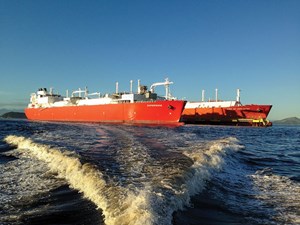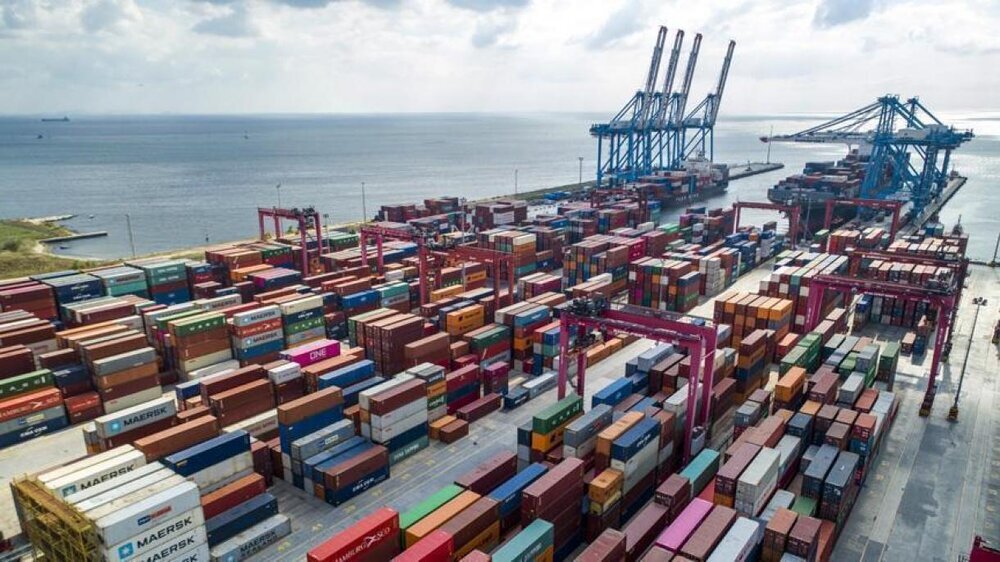As energy consumption rises, particularly in Asia, and the world shifts towards cleaner fuels, global demand for liquefied natural gas (LNG) is expected to double to 700 MMt by 2040.1 However, despite the belief that LNG will play a significant role in shaping a lower-carbon future, with around 80% of global energy demand growth forecast to be met by renewables and gas, there is no denying the impact that Covid-19 has had on the large-scale LNG sector.

Fig. 1. LNG carriers sit idle in port after significant demand disruption resulted in over 100 canceled U.S. cargoes, as prices for the fuel collapsed to record lows in Europe and Asia.
So far this year, after demand fell in relation to the Covid-19 pandemic, LNG buyers around the world have cancelled more than 100 U.S. cargoes, as prices for the fuel collapsed to record lows in Europe and Asia. What’s more, there have only been orders for six LNG carriers (LNGCs) placed this year, Fig. 1. However, with the rate of cancellations on the decline and an increase in orders expected, it is prospected that the sector will emerge from the crisis in a healthier state than it was prior to the pandemic.
LNG FORECAST
As seen previously, the LNG industry is cyclical, and 2020 is likely to mark the lowest point of LNG in its current cycle. The industry is expected to come back strong, with forecasts predicting that LNG prices will rebound, and economic activity will begin to normalize.
LNG demand is set to increase incrementally into the future, which will help to stabilize excess supply across the market. Based on current estimations, global liquefaction capacity is set to see a near-70 Mtpa (95-Bcm) expansion in the period up to 2024, should all projects in the pipeline pan out as planned, including those in planning and pre-final investment decision (FID) phases.2
Key markets. Asia will remain the front-runner in the LNG market and with prices at such a low level, this will provide an opportunity for these markets to move away from more pollutive energy to more sustainable sources, such as LNG. In addition, the use of floating storage regasification units (FSRUs) will further decrease the barriers faced by emerging markets moving toward LNG, as well as reduce upfront costs and risks associated with onshore LNG developments, Fig. 2.

Fig. 2. FSRUs are a vital component for transiting and transferring LNG through oceanic channels.
In addition, there has been a recent race for territory in the Caribbean, with a market starting to open up for smaller parcels of LNG to be distributed from larger hubs. The Atlantic basin has the potential to be fed from a number of sources, some pre-existing, and some quite novel.
The recent Exmar floating liquified natural gas (FLNG) project in Argentina, the New Fortress Energy projects, and now even LNG directly supplied from barges from the U.S., have the potential to provide LNG to the Caribbean islands, so long as the necessary infrastructure is available. In some cases, this can begin with containerized parcels, or direct LNG-produced ship-to-shore power infrastructure, until more permanent facilities are constructed.
This island distribution model not only works in the Caribbean, but in many other places globally where smaller-scale distribution networks can be leveraged off localized large-scale hubs. Japan has used this satellite model previously to distribute parcels of LNG based from a fixed FSU asset, and many projects in Asia have looked at implementing similar smaller-scale distribution, or power solution models.
It is clear that LNG will be around for a long time. However, in the not-too-distant future, the operation space may not be as it is currently, and it is feasible that the sheer quantity of new smaller-scale projects could overtake LNG’s large-scale project infrastructure.
LNG: The link-up. The quality of LNGC builds can vary from one designed simply to do the job it is commissioned for, and one which is designed for a lifetime extension. While the latter option may be more expensive, the plant is well-suited for use for conversion to FSU, FSRU or LNGC.
The safe, efficient transportation and transfer of LNG as a cargo has an enviable track record over its 40-plus-year history. To continue this, ports, terminals and vessels must take a smarter approach to interfaces between units in LNG transfer, which can have a huge impact on overall efficiency.

Fig. 3. Going forward, it’s imperative to upgrade the safety chain and emergency shutdown equipment during liquid transfer to ensure efficient, future-proofed operations.
When managing FSRU operations, the ship-to-shore interfaces for gas output, and interfaces between LNGC and FSRU for liquid transfer, are mission-critical. The ship-shore link (SSL) is part of the emergency shutdown (ESD) and safety chain across this interface, carrying communications and data between ship and shore or floating assets, Fig. 3.
Next-generation SSLs accommodate these potential changes of use, so upgrading to this sort of model during a plant’s trading life not only makes the operation more streamlined, it also makes the transition to any future mode of operation a lot simpler.
Case study: Upgrade to future-proof. During 2020, an LNG carrier owned by a leading LNG cargo transportation company reached a mandatory drydock and refit period, which became an opportunity to extend the useful life of the vessel and its critical safety systems. The vessel’s original, conventional SSL system required an upgrade solution.
The replacement SSL is part of Trelleborg’s SmartPort portfolio, which powers the critical interface between ship and port, on land and sea. It connects port operations, allowing operators to analyze performance and use data to improve decision-making. The system integrates assets like fenders, mooring equipment, ship performance monitoring, and navigation systems, underpinned by cloud technologies.
In order for the vessel’s SSL system to be supported well into the future, the most significant aspect of the upgrade was to the SSL’s cabinet, typically installed in the ship’s control room. A new SSL cabinet replaced all the electronic components and associated hardware, providing new operator interfaces and the latest software. It mimicked the original installation to ensure the critical ESD path, telecommunications and mooring load monitoring functions were maintained. It is a platform that is capable of allowing simpler conversion to alternate trading modes, such as FSRU, FSU and FLNG.
The upgrade consisted of new electronic components that can support future replacements, repairs or spare parts, ensuring that it is future-proofed for continued support. The new components are smaller, creating space and enabling easier access for maintenance. It also allows for easy integration or combination of other systems.
The updated software featured refreshed operator interfaces that were familiar, yet improved. The design of the new system will create a baseline for future innovations, such as integrating it to a network that could provide the ability for live, remote assistance.
The other aspects of the upgrade included replacing components that had suffered heavy use and exposure to the harsh marine environment on the ship’s deck. This included ship-side connection boxes. The connectors housed within them connect the ship SSL system to the shore SSL system, when loading and unloading LNG cargo.
A cable passes across to the ship from the shore, and an operator on the deck physically manhandles the cable and plugs it in to the ship-side box. As LNG is a hazardous liquid and electric signals are passed through the area to enable communication, connectors have to be explosion-proof. This means that they are designed and built, so that if a spark is created by an electric signal, it cannot escape the connector in a potentially hazardous environment, causing ignition.
Additionally, repeated mating of connectors can wear out mating surfaces, degrading link quality, which can lead to intermittent or permanent fault or failure. Umbilical cables—shore projects, not on the ship—can be worn out by multiple winding and unwinding. Rough handling cannot only affect operability but compromise hazardous area safety.
New equivalents that ensure the SSL’s connection integrity without compromising any of the original compatibility, crucial for trading LNG vessels worldwide, easily replace hazardous area-certified connectors. By utilizing existing footprints and cabling, commissioning engineers, working closely with ship and yard staff, were able to complete the onboard installation within a matter of days, to ensure minimum impact during the drydock period. This vessel is one of a series that will be reaching significant drydock periods in the coming years, and this upgrade philosophy will be utilized again to ensure smooth replacement of the conventional SSL systems installed fleet-wide.
Source: https://www.worldoil.com/magazine/2021/january-2021/features/the-future-of-lng-post-pandemic















